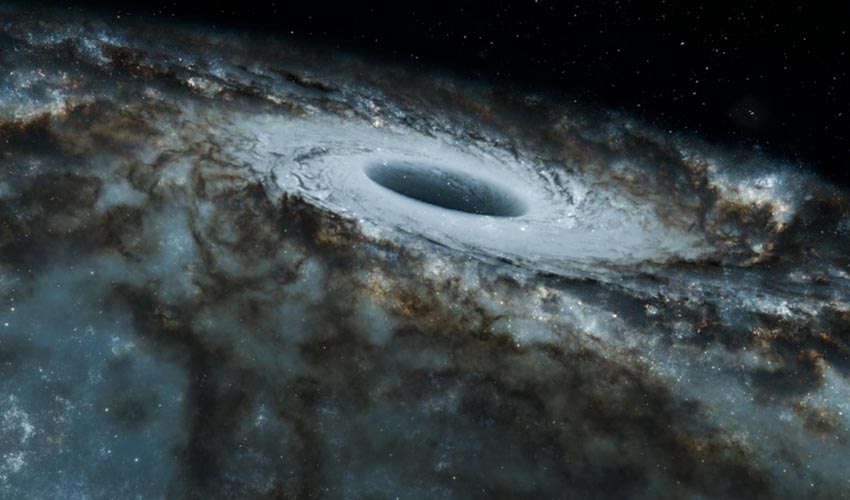Dimensional Spaces – The Fourth Dimension
I am deeply convinced that there exists a rich tapestry of reality that extends far beyond the dimensions we can perceive with our limited senses. Have you ever pondered the possibility of alternate dimensions that exist quietly beside us, eluding our awareness? Imagine for a moment if you had the ability to traverse these unseen realms, to slip seamlessly from one dimension into another. Our experience in this three-dimensional world shapes our understanding, and consequently, our minds struggle with the concept of dimensions beyond the three we inhabit. While we navigate our lives in a three-dimensional space: length, width and height, scientists, particularly physicists, have posited that the universe might comprise as many as ten dimensions. This notion can be challenging to comprehend. Consider, for example, the experience of watching a movie in two dimensions. On a flat screen, characters may seem to embody depth and texture, yet everything remains fundamentally flat. We can appreciate the illusion, nodding along to the story, but we cannot physically step into that world.
Now, throw into the mix the idea of viewing that same movie with 3D glasses. Suddenly, a new realm opens up before us; the characters and objects pop out of the screen, creating an immersive experience that we can almost reach out and touch. For us, who are accustomed to a three-dimensional existence, this enhanced perception is not just an adventure in filmmaking; it mirrors the very nature of reality itself. Conceptually, it's easy to imagine moving through that three-dimensional space, but try to consider what existence might be like if you had only ever known life in two dimensions. For a being confined to such a world, the idea of a third dimension would seem utterly bizarre, an unfathomable reality. This phenomenon parallels our struggle to comprehend the fourth dimension, or any additional dimensions, as proposed by theoretical physics. The limitations of our perception are not simply due to a lack of imagination; rather, they stem from our biological and cognitive conditioning. Our brains, honed to navigate and make sense of a three-dimensional world, are not equipped to seek out or interpret anything beyond that. Therefore, while physicists work tirelessly to unravel the mysteries of the universe, assuming the existence of dimensions far exceeding our three-dimensional understanding, the vast majority of us remain blissfully unaware or perhaps, even oblivious.

Just as a two-dimensional being might fail to perceive the richness of depth available to us, we, too, may be constrained by our limited view of reality. The potential for dimensions beyond our comprehension invites both intrigue and humility. What wonders might exist just out of reach? What profound truths about the cosmos might unfold if we could somehow expand our understanding beyond the confines of three-dimensional life? While we may only experience the world in three dimensions, the ancient desire to explore the unknown and to seek out what lies beyond is part of the human spirit. In this quest for knowledge, we must embrace the mystery of the dimensions waiting in the wings, and perhaps, one day, unlock the profound interconnectedness of all existence.
Understanding Dimensional Space
In the fields of mathematics and physics, the concept of dimensional space serves as a fundamental framework for understanding the various directions and coordinates within which objects can exist and traverse. At its core, dimensional space provides a structured way to categorise and visualise the positioning and movement of entities in the universe, allowing for profound insights into both the physical world and abstract mathematical theories. In our daily lives, we navigate a familiar landscape defined by three dimensions: height, width, and depth that encompass what we refer to as three-dimensional (3D) space. Height enables us to perceive objects as they rise and fall, width allows for left-and-right movement, while depth facilitates forward and backward progression. Together, these three dimensions create a comprehensive coordinate system that describes the location and movement of objects in a manner that is intuitive and accessible to us. However, the exploration of dimensionality extends far beyond this three-dimensional framework. In advanced mathematics and physics, we encounter the concept of higher-dimensional spaces that transcend our everyday experiences. These spaces can take on multiple dimensions, often referred to as four, five, or even infinitely many dimensions allowing scientists and mathematicians to model and analyse intricate phenomena that are impossible to encapsulate using just three dimensions.
For example, in the world of quantum mechanics, the behaviour of particles often cannot be fully understood without considering complex multidimensional constructs. Similarly, string theory posits that the fundamental constituents of the universe are not point-like particles, but rather one-dimensional strings vibrating in a space of ten or more dimensions. These higher-dimensional frameworks enable theorists to reconcile disparate physical laws and formulate a more unified understanding of the universe. Moreover, higher-dimensional spaces are critical in the field of data analysis, where datasets often possess attributes that span multiple dimensions. Here, a point in a high-dimensional space can represent complex relationships and interactions among different variables, and sophisticated mathematical techniques are employed to extract meaningful insights from these multidimensional matrices.
While it can be challenging to visualise or intuitively grasp dimensions beyond our day-to-day experiences, these abstract concepts are essential tools in the arsenal of scientists and mathematicians. They illuminate the intricacies of our universe and provide powerful mechanisms for solving complex problems, revealing patterns and phenomena that lie hidden from our immediate perception. Through the exploration of dimensional spaces, we unlock the potential to understand not just the fabric of our reality, but also the underlying principles governing the very nature of existence itself.

Exploring Spaces Beyond Our Dimensional Existence
In 1884, the visionary thinker Edwin A. Abbott unveiled a remarkable novella that challenges the limitations of perception and invites readers to ponder the nature of dimensions beyond their own understanding. Titled "Flatland: A Romance of Many Dimensions," this thought-provoking work intricately weaves a narrative that revolves around the life of a square navigating the peculiar confines of a two-dimensional universe. (I really recommend reading this book as it is written in a straightforward, engaging style, and it uses a unique narrative to explore complex mathematical and philosophical concepts about dimensions, society, and perception.) Below, I’ll try to summarise the book…
In this flat world, the square coexists with an array of geometric shapes, including circles, triangles, and rectangles. However, restricted by the very nature of his dimensional reality, the square can perceive only the lines and angles that shape his existence. The vibrant complexity of his world is lost on him; he cannot fathom the three-dimensional realities that lie beyond the boundaries of his linear perception. Everything is perceived as flat, a mere projection devoid of depth, an existence limited to the world of length and width alone. The plot takes a transformative turn when the square's existence is disrupted by an extraordinary visitor: a sphere. At first, the sphere appears to the square as just another circle, an inconspicuous entity in the field of two dimensions. The square struggles to grasp the sphere's revelations about a three-dimensional realm, an existence teeming with volume and depth. The sphere's explanations, though filled with wonder, fall upon the square's ears as abstract and bewildering concepts. It isn’t until the sphere reveals the gateway to this new world that the square’s consciousness is irrevocably expanded.
As the square transcends his two-dimensional confines, he is awestruck by the richness of the three-dimensional reality that unfolds before him. No longer confined to mere lines, he witnesses a vibrant universe filled with shapes that possess not only width and height but also depth, a revelation both exhilarating and humbling. This experience awakens a newfound curiosity within the square, emboldening him to question the very nature of existence itself. Driven by a yearning to understand more, he inquires of the sphere about what lies beyond the three-dimensional planes he has just begun to comprehend. However, the sphere’s reaction is steeped in disbelief and discomfort. Struggling to conceive of a dimension beyond his already complex understanding, the sphere expresses a visceral apprehension, a response that serves as a poignant reflection of our own human limitations. Through this interaction, Abbott cleverly uses the sphere as a stand-in for the reader, prompting us to confront our own intellectual boundaries. Just as the sphere is unable to visualise a reality beyond the third dimension, we, too, grapple with the confines of our own perceptual frameworks.

Abbott's novella compels us to confront profound philosophical questions: What lies beyond our current understanding? How often do we dismiss ideas that challenge our preconceived notions, simply because we are unable to perceive them? "Flatland" is not merely a story of geometric shapes; it serves as a powerful metaphor for human understanding, illuminating the vast chasm between known and unknown. It urges us to remain open-minded, receptive to ideas that may initially seem beyond our grasp. In an era where scientific advancement continues to unravel the mysteries of the universe, Abbott's exploration of dimensionality encourages us to embrace the uncertainty that accompanies new knowledge. As we pursue the contours of reality, perhaps it will take a shift in perspective, a glimpse into another dimension, to truly broaden our horizons and expand our consciousness. In this light, "Flatland" stands not only as a literary classic but as an enduring invitation to explore the infinite possibilities that await beyond the limits of our own understanding.
The 4th Dimension
Today, physicists continue trying to tackle the complexities of the fourth dimension. For some, it is defined as a hypothetical space that stands perpendicular to a three-dimensional cube, a concept so alien to our everyday perceptions that visualising it becomes an arduous challenge. Sure, how does one truly grasp an existence that operates outside the familiar dimensions we navigate daily? Einstein's theories have also inspired profound inquiries into the tantalising possibility of time travel. While our movement within the tangible three-dimensional world allows us to traverse left or right, up or down, forward and backward, our journey through time is relegated to an inexorable march into the future. The notion of reversing this flow, travelling to the past, remains elusive and is often brushed aside as a mere fantasy. Yet, some intrepid researchers cling to the hope that wormholes, which are hypothetical gateways connecting disparate sectors of the space-time continuum, may one day hold the key to navigating the corridors of time itself. Thus, as we ponder the profound implications of this mysterious fourth dimension, we find ourselves standing at the intersection of science and wonder. It beckons us to explore the unknown, to transcend the confines of our perceptions, and to dare to imagine a reality that stretches far beyond the limitations of our present existence. The spheres of mysticism and science may seem disparate, but both converge in their quest to unravel the profound questions that lie at the heart of our universe.

Origins of the Concept
In the early 19th century, a wave of intellectual curiosity swept through the fields of mathematics and philosophy, sparking the imagination of an emerging class of thinkers who dared to ponder the possibilities of dimensions beyond our commonly perceived three. This burgeoning interest led to profound explorations into the concept of a fourth spatial dimension, an enigmatic realm that transcended the established boundaries of depth, width, and height. Among these pioneering minds was August Ferdinand Möbius, a mathematician whose contemplations laid the groundwork for what would become a revolutionary way of understanding space and shape. The allure of the fourth dimension lies not only in its mathematical abstraction but also in its potential to radically reshape our innate perceptions of reality. One of the most fascinating implications of this dimension is the capability it possesses to transform three-dimensional objects in such a manner that they appear as their own mirror images. This idea challenges our understanding of symmetry and spatial relationships, pushing the limits of our intuition and compelling us to re-evaluate the fabric of the universe we inhabit.
A quintessential embodiment of this fourth-dimensional concept is the tesseract, often referred to as a hypercube. This geometric figure serves as a bridge between our three-dimensional experience and the complexities of the fourth dimension. While envisioning a tesseract can seem daunting and perhaps nearly impossible within our limited three-dimensional framework, mathematicians and artists alike have developed various diagrams and models to visualise this extraordinary construct. A tesseract can be seen as a cube extended into the fourth dimension, a process that involves not merely replication but an intriguing geometric transformation that hints at a deeper reality, a reality that exists just beyond the veil of our perceptual limitations. As the 19th century progressed, another towering figure in the mathematical world, Bernhard Riemann, emerged with fascinating insights that would illuminate the path toward a richer understanding of higher-dimensional spaces. Riemann's work laid the very foundation for what we now consider true four-dimensional geometry, providing both the language and the mathematical framework necessary to navigate this uncharted territory. His explorations introduced the concept of curved spaces, a revolutionary shift that would intricately weave together the fabric of mathematics, physics, and even the evolution of our understanding of the cosmos itself.
Riemann's contributions would later resonate profoundly in modern physics, influencing key theories such as Einstein's theory of relativity. It was through the lens of higher-dimensional spaces that physicists began to decipher the vast complexities of gravitational fields and the warping of space-time itself. As a result, the exploration of the fourth dimension not only transformed the discourse within mathematics but also propelled humanity’s understanding of the universe into new and uncharted territories, opening up avenues for exploration that continue to inspire and challenge us to this day. In a world still grappling with the nature of reality, these explorations into the fourth dimension serve as a reminder of the boundless possibilities that lie within the realms of mathematics, physics, and the collective human imagination. As we continue to expand our understanding of dimensions beyond the familiar three, we are invited to question the very principles that govern the universe, embarking on a journey that promises to unveil mysteries both ancient and new.

Categories of Dimensional Spaces
In the intriguing fields of mathematics and physics, we explore a diverse array of dimensional spaces that extend far beyond our intuitive three-dimensional experience…
- Zero-Dimensional Space (0D): Often conceptualised as a solitary point, 0D is the most fundamental and abstract dimension, embodying a single location devoid of any spatial extent or degrees of freedom. It serves as a crucial building block in mathematics, particularly within the realms of set theory and abstract algebra.
- One-Dimensional Space (1D): The simplest form of dimensional space manifests as a straight line, where entities can only traverse a single axis, such as time itself. This limitation confines existence to one dimension, presenting a linear narrative stripped of any spatial depth.
- Two-Dimensional Space (2D): Expanding our dimension, 2D encompasses a plane, much like a sheet of paper, enabling us to map and analyse positions across two perpendicular directions. It opens our eyes to the rich tapestry of interactions possible within flat surfaces.
- Three-Dimensional Space (3D): The world we inhabit thrives in three dimensions: height, width, and depth. This triad allows us to articulate the physical universe and the dynamic movement of objects, rendering our experiences vivid and tangible.
- Four-Dimensional Space (4D): Here, time emerges as the pivotal fourth dimension, integral to our understanding of space-time in Einstein’s renowned theory of general relativity. This concept reshapes our perception of reality by intertwining the temporal flow with spatial dimensions.
- Euclidean n-Dimensional Space (nD): Beyond the familiar three, this space can possess any number of dimensions (n). It provides a framework for measuring distances and angles consistently, enriching our understanding of multi-dimensional geometry.
- Vector Spaces: These versatile constructs can embody any finite number of dimensions, forming the backbone of linear algebra. They play a vital role across disciplines such as physics, computer graphics, and engineering, where multidimensional relationships are essential.
- Hilbert Spaces: In the world of quantum mechanics, infinite-dimensional spaces capture the complex states of quantum systems, offering profound insights into the behaviour of particles at a subatomic level.
- Function Spaces: Comprising functions as their elements, these spaces are employed across myriad mathematical and scientific fields, showcasing the intricate relationships between functions and their applications.
- Manifolds: These fascinating spaces resemble Euclidean spaces in the vicinity of each point, yet they may exhibit unique global shapes and properties. This flexibility allows for exploration of complex geometries in higher dimensions.
- Phase Spaces: Vital in physics, phase spaces encompass the complete array of variables necessary to foresee the future behaviour of dynamic systems, providing a comprehensive framework for understanding motion and change.
Together, these dimensional spaces craft a rich tapestry of mathematical and physical concepts, expanding our understanding of the universe and the myriad ways we can navigate and describe it.
The Significance of Comprehending the Fourth Dimension
The enigmatic concept of the fourth dimension often evokes a sense of wonder and curiosity, leading many to ponder its relevance in a world dominated by three-dimensional experiences. If we cannot harness the mysteries of this dimension for time travel, and if our senses cannot perceive it directly, one might question the purpose of grappling with such an abstract notion. However, the pursuit of understanding higher-dimensional spaces transcends the limitations of our perceptual faculties and proves essential in fields like mathematics, physics, and cosmology. The investigation of these dimensions has far-reaching implications, providing invaluable frameworks for comprehending the complexities of our universe and our existence within it.
The Importance of Higher Dimensions in Mathematics
In mathematics, the exploration of higher dimensions, particularly the fourth dimension, serves as a crucial foundation, especially in geometric studies. These multidimensional spaces, although challenging to visualise, offer a wealth of opportunities for problem-solving and mathematical innovation. Concepts like hypercubes, four-dimensional analogs of cubes, expand the boundaries of conventional thought, inviting mathematicians to explore abstract worlds that transcend the familiar confines of our three-dimensional experiences. Moreover, in geometry, the fourth dimension unlocks new dimensions of representation and understanding. By delving into higher-dimensional spaces, mathematicians can devise innovative approaches to complex problems that defy conventional reasoning. The mathematical tools developed for grappling with these concepts not only enhance geometric comprehension but also significantly impact fields like topology and algebra. While we may be incapable of directly visualising four-dimensional objects, the robustness of mathematical abstraction enables us to create models and simulations that give us a glimpse into these higher realms, enriching our overall understanding of geometry.

The Fourth Dimension in Physics - A Paradigm Shift
With regards to physics, the fourth dimension, often conceptualised as time within the framework of space-time, is fundamental to our grasp of the physical universe and its governing laws. The groundbreaking theories of modern physics, including Albert Einstein's theory of general relativity, hinge upon this profound idea. By incorporating time as a dimension alongside the three spatial dimensions, physicists can make accurate predictions about the behaviour of objects and the progression of events in our universe. Time, as the fourth dimension, fundamentally alters our understanding of gravity. In the context of general relativity, gravity emerges not as a mystical force but as the curvature of space-time caused by massive objects, intricately linked to the passage of time. This revelation enables scientists to comprehend and articulate gravitational phenomena with remarkable precision. Without acknowledging the significance of time as a dimension, the complexities of gravitational interactions would remain obscured, complicating our ability to model and predict the behaviour of celestial bodies.
Everyday Applications - The Fourth Dimension in Daily Life
The implications of understanding the fourth dimension extend beyond theoretical frameworks and seep into our daily lives, shaping how we navigate and interact with the world around us. Take navigation, for instance, modern technologies such as Global Positioning Systems (GPS) are fundamentally grounded in our understanding of time as a fourth dimension. These systems rely on accurate timekeeping to provide precise location data, enabling seamless travel and communication in an increasingly interconnected world. Furthermore, the philosophical dimensions of the fourth dimension prompt us to engage in deeper contemplations about the nature of time, reality, and our place within the vast cosmos. Such reflections challenge our perceptions, urging us to consider how we relate to a universe that operates on principles far beyond our tangible experiences.
The Fourth Dimension in Cosmology - Revealing the Universe’s Mysteries
In the expansive field of cosmology, the fourth dimension plays a pivotal role in decoding the story of our universe's evolution. It assists scientists in investigating monumental events such as the Big Bang, the continuous expansion of the cosmos, and the intricate processes that led to the formation of galaxies and stars. By employing a four-dimensional framework, cosmologists can glean unprecedented insights into the nature of space, time, and matter, providing a comprehensive understanding of universal phenomena. In conclusion, while the fourth dimension may initially appear to be an abstract concept, its significance permeates various domains of inquiry, from mathematics and physics to our everyday experiences and the cosmic narrative. Understanding higher-dimensional spaces equips us with the tools to tackle complex challenges, enriching our intellectual landscape and deepening our comprehension of the universe. As we continue to explore these dimensions, we not only gain insight into the fundamental forces governing reality but also engage in a profound philosophical dialogue about existence itself. The pursuit of knowledge about the fourth dimension, therefore, is not merely an academic exercise; it is a vital quest that enhances our understanding of the world and our place within the grand tapestry of the cosmos.
“I am, as it were, an eye that the cosmos uses to look at itself.” - Rudy Rucker, The Fourth Dimension: A Guided Tour of the Higher Universes






















